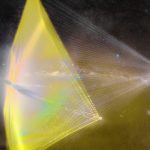Key Takeaways:
- Astronomers have witnessed a red supergiant star, SN 2020tlf, explode in a fiery supernova for the first time.
- The star’s violent pre-supernova eruptions were a surprise, as previous observations of such stars showed no such activity.
- Red supergiants are massive stars, hundreds to over a thousand times the size of the sun, which eventually explode in a type II supernova.
- Researchers observed SN 2020tlf for 130 days before it exploded, using telescopes in Hawaii.
- This breakthrough reveals that red supergiants undergo chaotic explosions of gas in their final months before collapsing, shedding light on the dying moments of massive stars.
Astronomy has achieved a groundbreaking milestone as scientists observed the spectacular explosion of a red supergiant star, SN 2020tlf, in a fiery supernova, marking the first time such an event has been witnessed in real-time. This cosmic spectacle turned out to be even more explosive than anticipated, offering invaluable insights into the final moments of these colossal celestial bodies.
The star’s dramatic pre-supernova pyrotechnics, characterized by intense flashes of light and the ejection of massive gas globules from its surface, took astronomers by surprise. Previous observations of red supergiants nearing their explosive ends had shown no signs of such violent emissions. Lead study author Wynn Jacobson-Galán, a research fellow at the University of California, Berkeley, hailed this as a breakthrough in understanding the demise of massive stars.
Red supergiants are the largest stars in the universe, dwarfing the sun in terms of volume, although they are not necessarily the brightest or most massive. These titanic stars generate energy through nuclear fusion, forging heavier elements than our sun can produce. As they progress through increasingly massive elements, their cores heat up and become highly pressurized. Eventually, when they begin fusing iron and nickel, they run out of energy, resulting in a core collapse and the violent expulsion of their outer atmospheres, culminating in a type II supernova.
While scientists have observed red supergiants before they go supernova and studied the aftermath of these cataclysmic events, witnessing the entire process unfold in real-time has remained elusive until now.
The researchers embarked on their observation of SN 2020tlf in the summer of 2020, detecting bright flashes of radiation interpreted as gas explosions from the star’s surface. Over 130 days, using telescopes in Hawaii, including the University of Hawaii Institute for Astronomy Pan-STARRS1 telescope and the W. M. Keck Observatory on Mauna Kea, they diligently monitored the star. Finally, at the end of this period, the star met its explosive fate.
At the time of the star’s detonation, the team observed a dense cloud of gas surrounding it, likely the same gas ejected during the preceding months. This suggests that violent explosions were occurring within the star well before its core collapsed in the fall of 2020.
Study co-author Raffaella Margutti, an astrophysicist at UC Berkeley, emphasized the significance of these findings, as they confirm such violent activity in a dying red supergiant star, a phenomenon never before witnessed. These observations indicate that these massive stars undergo significant internal structural changes, resulting in tumultuous gas explosions in the months leading up to their collapse. This newfound knowledge sheds light on the enigmatic final stages of massive star evolution.


